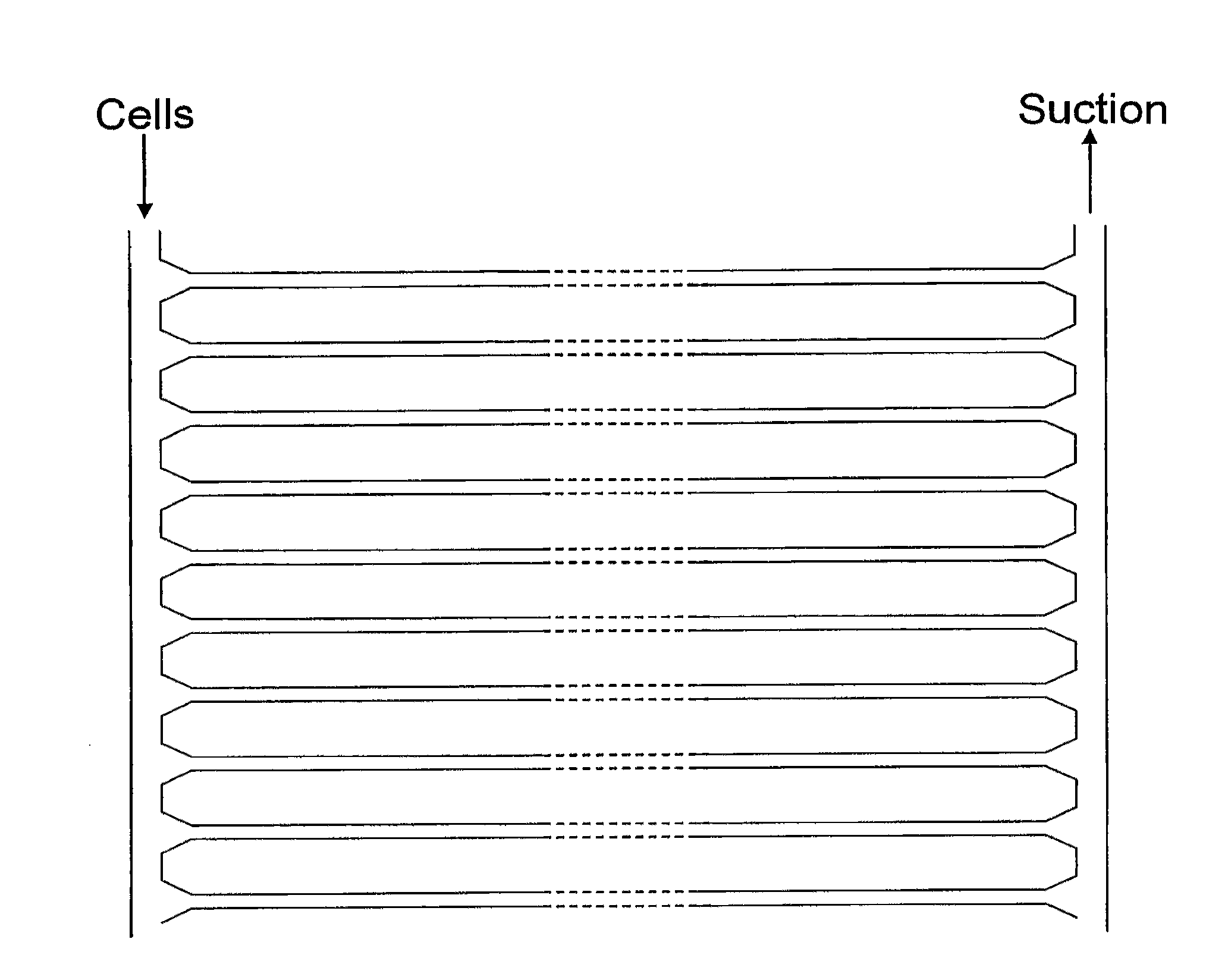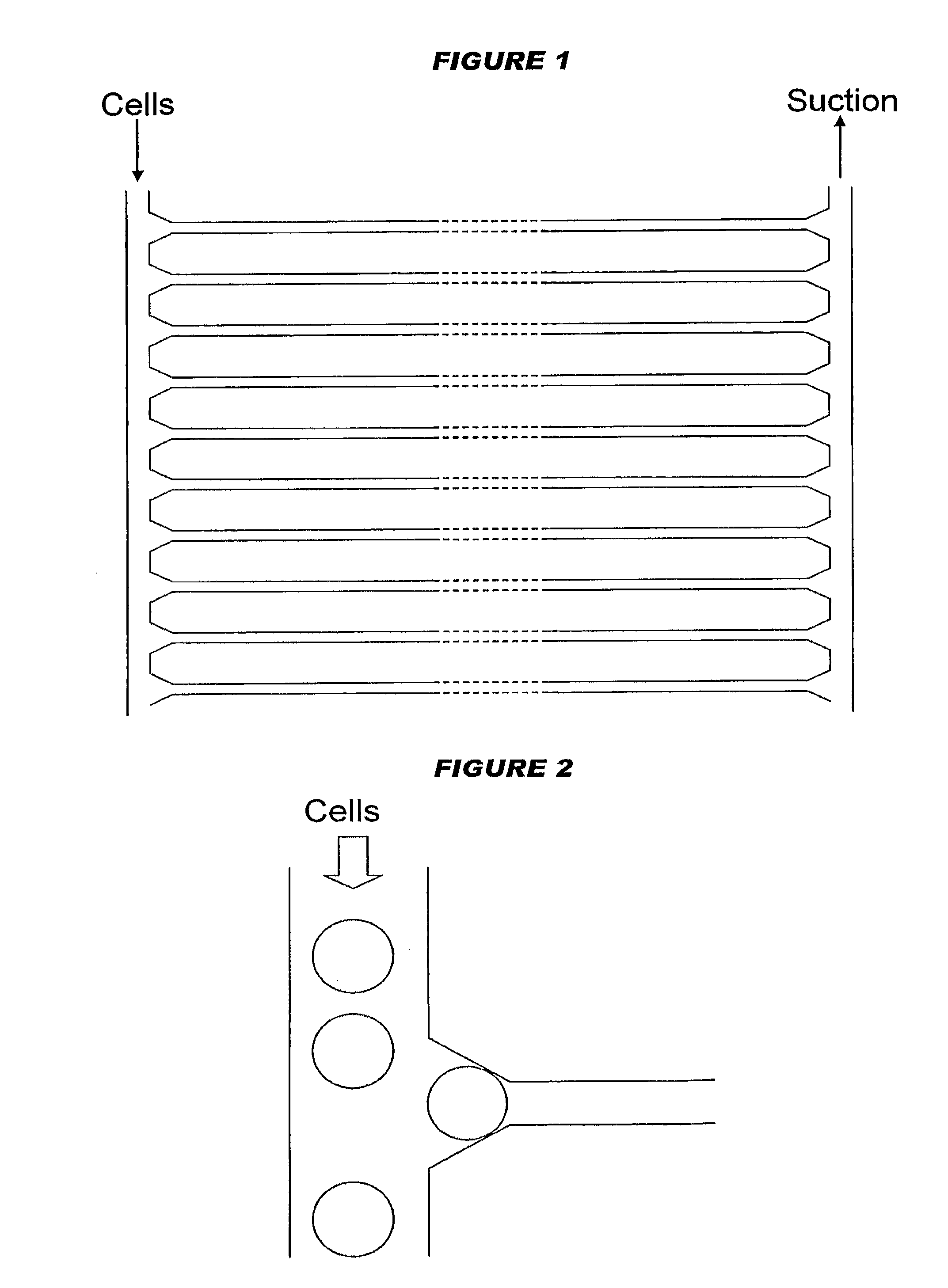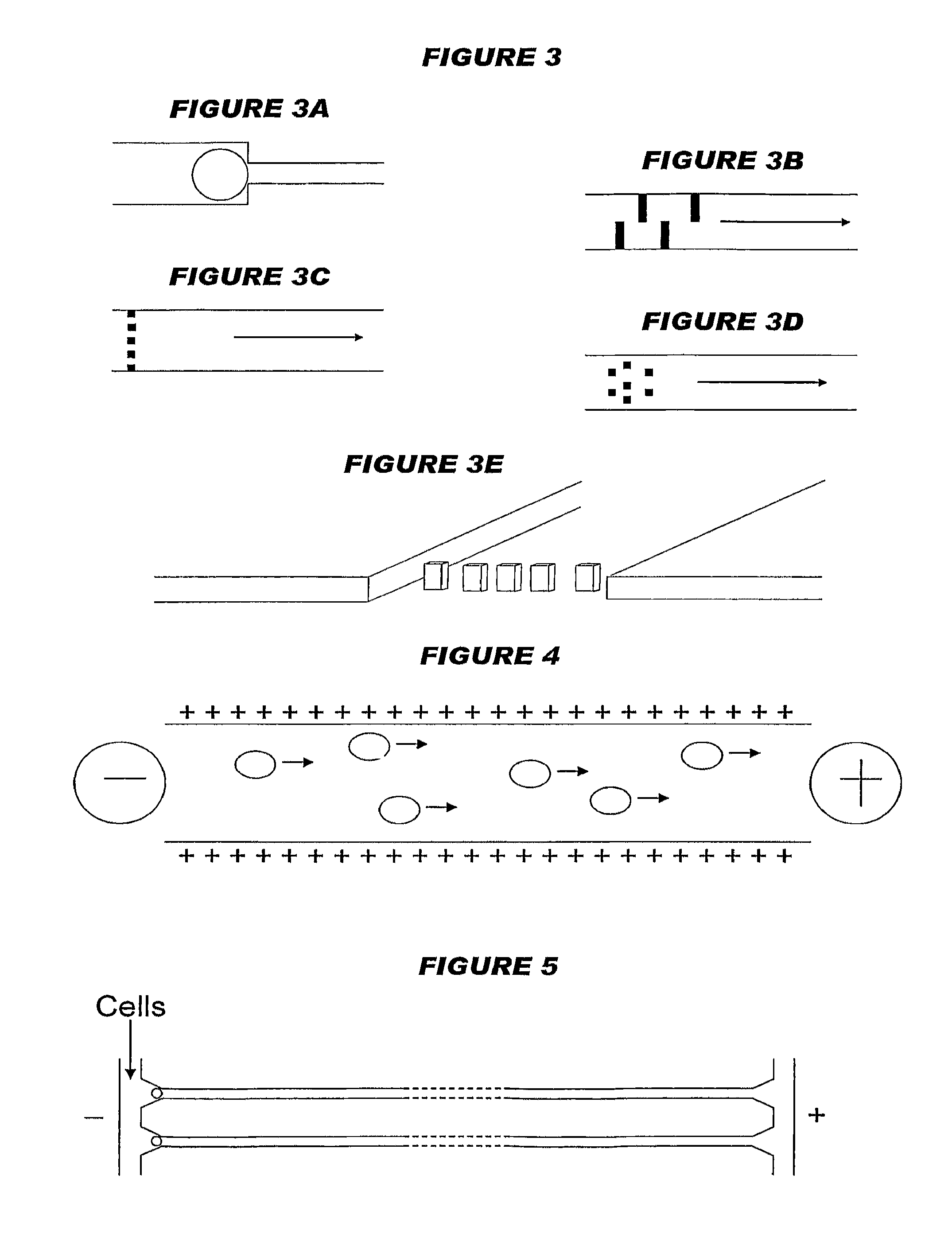Devices and processes for analysing individual cells
a technology of individual cells and devices, applied in the field of cell analysis, can solve the problems of inability to provide information, loss of subtle but important variations between cells within experimental noise, etc., and achieve the effects of low contrast in images, enhanced contrast in images, and flexible selection of field of view
- Summary
- Abstract
- Description
- Claims
- Application Information
AI Technical Summary
Benefits of technology
Problems solved by technology
Method used
Image
Examples
Embodiment Construction
Microfabricated Device
[0271]A microfluidic network (1) with a plan view as shown in FIG. 33 was made within a PDMS slab. Cells enter at the top of the device, along delivery line (10). Single cells are trapped at the tapered entrances (20) of multiple parallel channels (30) and their contents travel in the direction shown by the arrow. After travelling along the channels (30), reagents leave the output ends (40) of the device (1) by exhaust (50). An enlarged view of the output ends (40) in the final PDMS device (1) is shown in FIG. 34. An enlarged view of the tapered entrances (20) in the final PDMS device (1) is shown in FIG. 35. Detail of the regions downstream of entrances (20), including various arrangements of projections (60) for trapping cells, is shown in FIG. 36. The channels (30) have a rectangular cross-section, being 10 μm wide and, depending on the thickness of PDMS used, from 2-20 μm high. Adjacent channels are separated by 60 μm. The entrances (20) taper from 50 μm to...
PUM
| Property | Measurement | Unit |
|---|---|---|
| height | aaaaa | aaaaa |
| area | aaaaa | aaaaa |
| volume | aaaaa | aaaaa |
Abstract
Description
Claims
Application Information
 Login to View More
Login to View More - R&D
- Intellectual Property
- Life Sciences
- Materials
- Tech Scout
- Unparalleled Data Quality
- Higher Quality Content
- 60% Fewer Hallucinations
Browse by: Latest US Patents, China's latest patents, Technical Efficacy Thesaurus, Application Domain, Technology Topic, Popular Technical Reports.
© 2025 PatSnap. All rights reserved.Legal|Privacy policy|Modern Slavery Act Transparency Statement|Sitemap|About US| Contact US: help@patsnap.com



